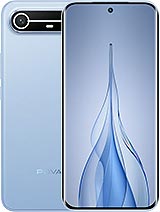Honor X7c alternatives
Tap above to see alternatives.
Realme 14T alternatives
Tap above to see alternatives.
Realme 14T

Realme 14T
-
Dimensity 6300
6 nm
-
6000 mAh
45W
-
6.67"
1080 x 2400 pixels
-
50 MP
1080p@30/60
- Specs
2x2.2 GHz Cortex-A78
6x1.95 GHz Cortex-A55
2x2.4 GHz Cortex-A76
6x2.0 GHz Cortex-A55
8GB 256GB (UFS 2.2)
f/1.8, (wide), PDAF
2 MP
f/2.4, (depth)
f/1.8, 27mm (wide), 1/2.88", OmniVision OV50D40, PDAF
2 MP
f/2.4
f/2.2, (wide)
f/2.4, 23mm (wide), 1/3.09", Sony IMX480
SIM1: Nano, SIM2: Nano (Hybrid)
9 5G bands
n1, n3, n5, n8, n28, n40, n41, n77, n78
In this performance comparison, the Honor X7c with its Qualcomm Snapdragon 4 Gen 2 (4nm) performs better than the Realme 14T with the Mediatek Dimensity 6300 (6nm), thanks to superior chipset efficiency.
Realme 14T offers 3 years of OS updates, while Honor X7c does not have confirmed OS update information. Realme 14T receives 4 years of security updates, while Honor X7c does not have confirmed security update information.
Realme 14T features a superior AMOLED display, while Honor X7c comes with an LCD panel. Both smartphones offer the same 120 Hz refresh rate. Realme 14T also boasts a brighter screen with 2100 nits of peak brightness, enhancing outdoor visibility. Both phones have the same screen resolution.
Realme 14T features a larger 6000 mAh battery, potentially delivering better battery life. Realme 14T also supports faster wired charging at 45W, compared to 35W on Honor X7c.
Realme 14T offers better protection against water and dust with an IP69 rating.
- Honor X7c – Check price here
¹ Scores can vary even with the same chipset due to RAM, thermals, and software optimization.











